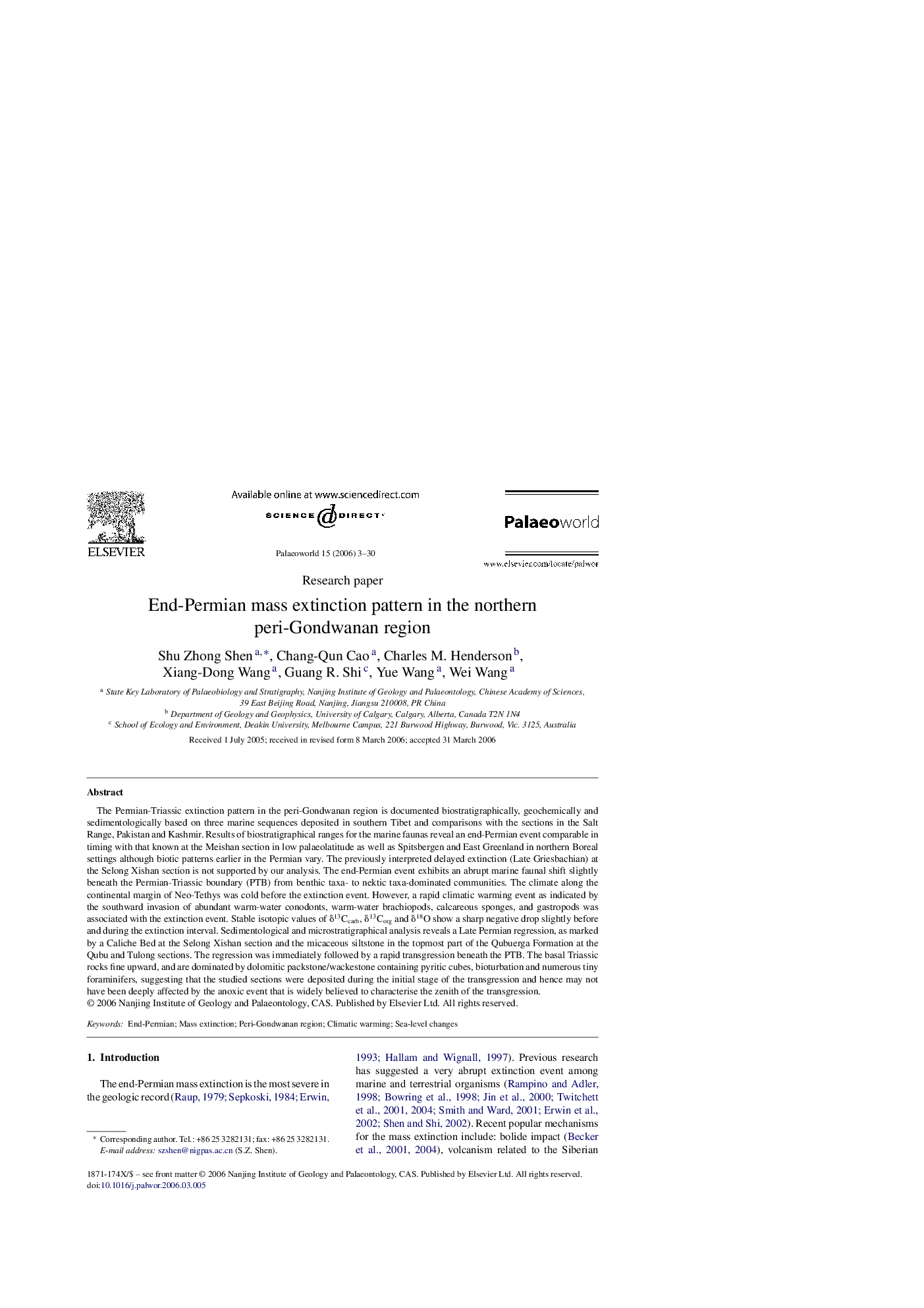| کد مقاله | کد نشریه | سال انتشار | مقاله انگلیسی | نسخه تمام متن |
|---|---|---|---|---|
| 4749997 | 1360630 | 2006 | 28 صفحه PDF | دانلود رایگان |

The Permian-Triassic extinction pattern in the peri-Gondwanan region is documented biostratigraphically, geochemically and sedimentologically based on three marine sequences deposited in southern Tibet and comparisons with the sections in the Salt Range, Pakistan and Kashmir. Results of biostratigraphical ranges for the marine faunas reveal an end-Permian event comparable in timing with that known at the Meishan section in low palaeolatitude as well as Spitsbergen and East Greenland in northern Boreal settings although biotic patterns earlier in the Permian vary. The previously interpreted delayed extinction (Late Griesbachian) at the Selong Xishan section is not supported by our analysis. The end-Permian event exhibits an abrupt marine faunal shift slightly beneath the Permian-Triassic boundary (PTB) from benthic taxa- to nektic taxa-dominated communities. The climate along the continental margin of Neo-Tethys was cold before the extinction event. However, a rapid climatic warming event as indicated by the southward invasion of abundant warm-water conodonts, warm-water brachiopods, calcareous sponges, and gastropods was associated with the extinction event. Stable isotopic values of δ13Ccarb, δ13Corg and δ18O show a sharp negative drop slightly before and during the extinction interval. Sedimentological and microstratigraphical analysis reveals a Late Permian regression, as marked by a Caliche Bed at the Selong Xishan section and the micaceous siltstone in the topmost part of the Qubuerga Formation at the Qubu and Tulong sections. The regression was immediately followed by a rapid transgression beneath the PTB. The basal Triassic rocks fine upward, and are dominated by dolomitic packstone/wackestone containing pyritic cubes, bioturbation and numerous tiny foraminifers, suggesting that the studied sections were deposited during the initial stage of the transgression and hence may not have been deeply affected by the anoxic event that is widely believed to characterise the zenith of the transgression.
Journal: Palaeoworld - Volume 15, Issue 1, January 2006, Pages 3–30